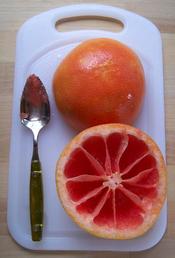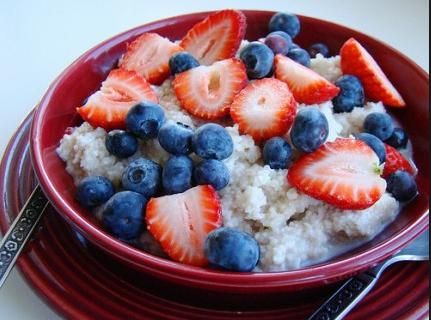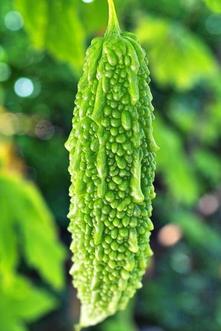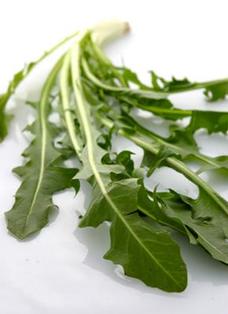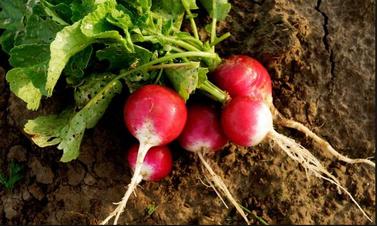FOOD AND HEALTH
05/07/13 article prepared by Natasha M
Anti-cancer diet: Porridge for breakfast NEW
US researchers recommend including porridge and oatmeal in your diet to reduce the risk of cancer. Fiber-rich food containing vitamins might help fight cancer, as well as several other diseases and also prolong life. Researchers from the National Cancer Institute in Rockville found out that volunteers who regularly ate cereals were less likely to be diagnosed with cancer. Previously, studies have shown that a daily plate of porridge or oatmeal for breakfast helps to prevent diabetes and heart disease.
If you'd like to try that diet, you can cook a bowl of traditional oatmeal and include other antioxidant-rich foods such as berries, fruits, nuts and chocolate to your bowl for an added cancer-fighting boost.
Anti-cancer diet: Porridge for breakfast NEW
US researchers recommend including porridge and oatmeal in your diet to reduce the risk of cancer. Fiber-rich food containing vitamins might help fight cancer, as well as several other diseases and also prolong life. Researchers from the National Cancer Institute in Rockville found out that volunteers who regularly ate cereals were less likely to be diagnosed with cancer. Previously, studies have shown that a daily plate of porridge or oatmeal for breakfast helps to prevent diabetes and heart disease.
If you'd like to try that diet, you can cook a bowl of traditional oatmeal and include other antioxidant-rich foods such as berries, fruits, nuts and chocolate to your bowl for an added cancer-fighting boost.
I heard from some families that they use to eat bitter foods on a weekly basis. I know mu grandmother was doing it too. Do you know why bitter foods and why weekly? I tried to investigate this subject and went through loads of websites to find better information for you...
BITTER FOODS
There are some best articles I found:
MIM Beim explains why bitter tasting drinks and foods are so good for us.
** Question: My Italian grandmother insists on a bitter drink before her dinner and says it helps her digestion. What are your thoughts?
-- Answer: James Green, an American herbalist, said, "The mistake of eliminating the bitter flavour from our daily experience is like eliminating one of the colours of the rainbow." Unfortunately, in Australia, bitter foods are thin on the ground. Grapefruit, chicory, radicchio, endives, cress, olives, hops and coffee are the only bitter foods that spring to mind.
In England, a salad made from bitter lettuce leaves was traditionally eaten before the meal, rather than with it as we do today. In the interest of harmony and health, Chinese cuisine often includes a bitter element such as bitter melon, which is said to relieve the body of internal heat. Bitter herbs also form the basis of European digestifs and aperitifs such as Campari and good old Angostura bitters.
Tastebuds are bundles of nerve endings, located all over the tongue. Bitter buds are found at the back of the tongue, sour to either side, sweet at the tip and salty in between. Bitter tastebuds connect to the vagus nerve, which stimulates the functioning of the digestive organs: stomach, pancreas, gall bladder and intestine. One of the main tenets of natural therapies is to improve digestion and stimulating the vagus nerve will do this.
Symptoms of a digestive system crying out for bitters include bloating, burping, flatulence and constipation. These symptoms in particular indicate low stomach-acid production. Other signs include peeling fingernails, dry lips, increased susceptibility to parasitic and fungal infections and a tendency to gastroenteritis. As we age, stomach-acid production drops and this inhibits absorption of nutrients such as protein, iron and vitamin B12.
The main bitter herbs include gentian, goldenseal, wormwood, St Mary’s thistle and dandelion root. The idea is to taste the bitterness. The more bitter, the better.
A teaspoon of herbal bitters, often called Swedish bitters, in a wineglass of water before dinner trains your digestive system into healthier habits. They are available from health-food stores.
Bitters enhance your appetite, but don’t cause overeating. People who are pregnant or have stomach ulcers should avoid them.
BITTER FOODS
There are some best articles I found:
MIM Beim explains why bitter tasting drinks and foods are so good for us.
** Question: My Italian grandmother insists on a bitter drink before her dinner and says it helps her digestion. What are your thoughts?
-- Answer: James Green, an American herbalist, said, "The mistake of eliminating the bitter flavour from our daily experience is like eliminating one of the colours of the rainbow." Unfortunately, in Australia, bitter foods are thin on the ground. Grapefruit, chicory, radicchio, endives, cress, olives, hops and coffee are the only bitter foods that spring to mind.
In England, a salad made from bitter lettuce leaves was traditionally eaten before the meal, rather than with it as we do today. In the interest of harmony and health, Chinese cuisine often includes a bitter element such as bitter melon, which is said to relieve the body of internal heat. Bitter herbs also form the basis of European digestifs and aperitifs such as Campari and good old Angostura bitters.
Tastebuds are bundles of nerve endings, located all over the tongue. Bitter buds are found at the back of the tongue, sour to either side, sweet at the tip and salty in between. Bitter tastebuds connect to the vagus nerve, which stimulates the functioning of the digestive organs: stomach, pancreas, gall bladder and intestine. One of the main tenets of natural therapies is to improve digestion and stimulating the vagus nerve will do this.
Symptoms of a digestive system crying out for bitters include bloating, burping, flatulence and constipation. These symptoms in particular indicate low stomach-acid production. Other signs include peeling fingernails, dry lips, increased susceptibility to parasitic and fungal infections and a tendency to gastroenteritis. As we age, stomach-acid production drops and this inhibits absorption of nutrients such as protein, iron and vitamin B12.
The main bitter herbs include gentian, goldenseal, wormwood, St Mary’s thistle and dandelion root. The idea is to taste the bitterness. The more bitter, the better.
A teaspoon of herbal bitters, often called Swedish bitters, in a wineglass of water before dinner trains your digestive system into healthier habits. They are available from health-food stores.
Bitters enhance your appetite, but don’t cause overeating. People who are pregnant or have stomach ulcers should avoid them.
We find bitter tastes in:
Traditional Chinese Medicine views different types of foods as having specific impacts on health depending on their flavors. The primary categories in Traditional Chinese Medicine are
bitter,
pungent,
salty, sour and sweet. Bitter foods, such as asparagus, bitter melon, wild cucumber, celery, coffee, grapefruit peel, kohlrabi, lettuce and vinegar are believed to promote health by reducing body heat and drying body fluids. Other categories have different health functions - for example, sweet foods are said to neutralize the toxic effects of other foods while sour foods such as lemon are used to treat diarrhea and excessive perspiration.
In TCM, bitter foods aren't necessarily viewed as better for overall health than foods with other flavors. For example, while bitter foods are seen as good for the heart and small intestine, sweet foods are said to be good for the stomach and spleen and the other flavors are beneficial for other internal organs. The idea is to include in your diet a balance of all five flavors.
Other cultures make use of bitter flavors to influence health as well. European herbalists are very fond of "bitters" to stimulate and tone the digestive system, and they rate gentian root as the best of them all. Several brands of alcoholic extracts of gentian root are available worldwide, most with other plants added for flavor. For example, Angostura bitters, a popular ingredient used in cocktails, is sold in most U.S. liquor stores and supermarkets. It is essentially a tincture of gentian root. For sluggish digestion, poor appetite, or flatulence, try taking a teaspoon of Angostura bitters before or after meals (experiment to see which works best for you). If you do not like it straight, try diluting it with sparkling water to make a (practically) nonalcoholic "cocktail." Gentian root is harmless and quite effective. Another well-known aperitif, Campari, is one of many bitter Italian drinks made from various herbs, spices, and fruit peels. You may be able to get a similar digestive effect, minus the alcohol, by beginning a meal with a salad of bitter greens such as curly endive, arugula, or dandelion greens flavored with lemon juice.
In Ayurvedic medicine, foods with bitter tastes are said to aid in weight loss and help control food cravings.
In the U.S. a bitter taste isn't always appreciated (with the exceptions of beer, coffee, and chocolate, and the latter two are often served heavily sweetened). We detect bitter taste via some 24 (receptors that enable us to respond to a wide variety of compounds), some of which are toxic (the ability to perceive a bitter taste probably evolved as protection against consuming poisons.) It's possible that our cultural disdain for bitter foods is linked to our immoderate consumption of sugar and sweets. I think certain bitter foods do offer distinct advantages, and I think it's a good idea to include more of them, judiciously, in the diet.
- bitter melon and gourd
- Japanese eggplant, turmeric
- fenugreek seeds, raddish
- leafy greens, barley
- basil, nettle
- grapefruit, cranberries
- pomegranates, endive
- cress, olives
- parsley, dandelion leaves
- jicama, lettuce
- aloe vera
- coffee, tea, cocoa
Traditional Chinese Medicine views different types of foods as having specific impacts on health depending on their flavors. The primary categories in Traditional Chinese Medicine are
bitter,
pungent,
salty, sour and sweet. Bitter foods, such as asparagus, bitter melon, wild cucumber, celery, coffee, grapefruit peel, kohlrabi, lettuce and vinegar are believed to promote health by reducing body heat and drying body fluids. Other categories have different health functions - for example, sweet foods are said to neutralize the toxic effects of other foods while sour foods such as lemon are used to treat diarrhea and excessive perspiration.
In TCM, bitter foods aren't necessarily viewed as better for overall health than foods with other flavors. For example, while bitter foods are seen as good for the heart and small intestine, sweet foods are said to be good for the stomach and spleen and the other flavors are beneficial for other internal organs. The idea is to include in your diet a balance of all five flavors.
Other cultures make use of bitter flavors to influence health as well. European herbalists are very fond of "bitters" to stimulate and tone the digestive system, and they rate gentian root as the best of them all. Several brands of alcoholic extracts of gentian root are available worldwide, most with other plants added for flavor. For example, Angostura bitters, a popular ingredient used in cocktails, is sold in most U.S. liquor stores and supermarkets. It is essentially a tincture of gentian root. For sluggish digestion, poor appetite, or flatulence, try taking a teaspoon of Angostura bitters before or after meals (experiment to see which works best for you). If you do not like it straight, try diluting it with sparkling water to make a (practically) nonalcoholic "cocktail." Gentian root is harmless and quite effective. Another well-known aperitif, Campari, is one of many bitter Italian drinks made from various herbs, spices, and fruit peels. You may be able to get a similar digestive effect, minus the alcohol, by beginning a meal with a salad of bitter greens such as curly endive, arugula, or dandelion greens flavored with lemon juice.
In Ayurvedic medicine, foods with bitter tastes are said to aid in weight loss and help control food cravings.
In the U.S. a bitter taste isn't always appreciated (with the exceptions of beer, coffee, and chocolate, and the latter two are often served heavily sweetened). We detect bitter taste via some 24 (receptors that enable us to respond to a wide variety of compounds), some of which are toxic (the ability to perceive a bitter taste probably evolved as protection against consuming poisons.) It's possible that our cultural disdain for bitter foods is linked to our immoderate consumption of sugar and sweets. I think certain bitter foods do offer distinct advantages, and I think it's a good idea to include more of them, judiciously, in the diet.
Bitter foods like grapefruit, unsweetened cocoa, endive and kale may not excite your taste buds like sweet or spicy flavors do, but there’s a reason to make a concerted effort to get more bitter foods into your diet: they’re exceptionally healthy.
Bitter is actually one of the six rasas, or tastes, of Indian Ayurveda. For best health, it’s said that you should eat all six rasas at every meal (the other five include sweet, sour, salty, pungent and astringent). Focusing too heavily on one or the other, or avoiding one completely, can lead to imbalances that cause disease.
According to Ayurvedic principles, bitter, which is the flavor most lacking in our diets, helps to tone skin and purify the body, along with other important health benefits.
If bitter foods are a challenge for you to consume, keep trying. It often takes five to 10 attempts before you’ll begin to even tolerate a food you loathe. And from there, you might just begin to like it, especially when you remind yourself of the health benefits therein.
Remember just one simple rule: the taste of bitter is the taste of health!
Humans sense bitterness from many things in order to avoid them at harmful levels. Yet, served in the right amount, bitter foods can be both beneficial and even medicinal: “bitterness is the chemotherapy of taste.” Hate Brussels sprouts? Balance the bitter flavor with a little salt, sugar, lemon juice or vinegar. Or mix in other vegetables, such as sweet potatoes, carrots or caramelized onions. The next time you make them, use fewer carrots and more sprouts. Eventually you’ll find yourself craving a bowlful of them – alone – specifically for the energizing, stimulating taste challenge that bitter provides.
Bitter Melon
The name bitter gourd or bitter melon was derived from its bitter taste trademark. Even though it has a bitter taste, people still admire this fruit and they even came up with different recipes that will stop you from thinking that this fruit has a bitter taste. Some recipes shift its bitter taste to sweet taste, making it more appealing to kids and even to adults that dislike its bitter taste.
Karela primarily grows in vines. It bears its fruits during the month of September and November. It has an oblong shape body with warty surface and better be eaten when the color is green. It starts to become soggy when it’s already turning yellow green and yellow. The fruit itself has watery properties, yet the taste is still bitter but of course bearable by anyone’s tastes buds.
Bitter is actually one of the six rasas, or tastes, of Indian Ayurveda. For best health, it’s said that you should eat all six rasas at every meal (the other five include sweet, sour, salty, pungent and astringent). Focusing too heavily on one or the other, or avoiding one completely, can lead to imbalances that cause disease.
According to Ayurvedic principles, bitter, which is the flavor most lacking in our diets, helps to tone skin and purify the body, along with other important health benefits.
If bitter foods are a challenge for you to consume, keep trying. It often takes five to 10 attempts before you’ll begin to even tolerate a food you loathe. And from there, you might just begin to like it, especially when you remind yourself of the health benefits therein.
Remember just one simple rule: the taste of bitter is the taste of health!
Humans sense bitterness from many things in order to avoid them at harmful levels. Yet, served in the right amount, bitter foods can be both beneficial and even medicinal: “bitterness is the chemotherapy of taste.” Hate Brussels sprouts? Balance the bitter flavor with a little salt, sugar, lemon juice or vinegar. Or mix in other vegetables, such as sweet potatoes, carrots or caramelized onions. The next time you make them, use fewer carrots and more sprouts. Eventually you’ll find yourself craving a bowlful of them – alone – specifically for the energizing, stimulating taste challenge that bitter provides.
Bitter Melon
The name bitter gourd or bitter melon was derived from its bitter taste trademark. Even though it has a bitter taste, people still admire this fruit and they even came up with different recipes that will stop you from thinking that this fruit has a bitter taste. Some recipes shift its bitter taste to sweet taste, making it more appealing to kids and even to adults that dislike its bitter taste.
Karela primarily grows in vines. It bears its fruits during the month of September and November. It has an oblong shape body with warty surface and better be eaten when the color is green. It starts to become soggy when it’s already turning yellow green and yellow. The fruit itself has watery properties, yet the taste is still bitter but of course bearable by anyone’s tastes buds.
Health Benefits of Bitter Melon (Karela)Karela is not only used as an ingredient for cooking delicious delicacies, but it is also used for medical purposes. Most Asian countries and in African territory, Karela is used to treat some simple stomachache. They eat its fruit in raw and keeps on soaking it in either honey or olive oil.
Health Benefits of Bitter Melon (Karela) on Digestive SystemKarela has antihelminthic or anthelmintic compounds. This property is used for the treatment of gastrointestinal diseases and can kill parasitic worms inside our body. In Togo, they used this fruit to naturally eliminate the worms inside their body. It can cure gastrointestinal diseases because it has compounds that can kill toxic substances that keep on killing the good bacteria inside of us.
Health Benefits of Bitter Melon (Karela) in InfectionsKarela leaves are also used to cure some ailments. It can prevent malaria bacteria from growing. Well, as we all know, prevention is always better than cure. When you start to see the symptoms of malaria or if your doctor says that you have malaria, boil some Karela leaves and drink it like a tea. You can add garlic, salt, or small amount of sugar to even out the bitter taste of its leaves.
Karela tea is not only expert in killing malaria bacteria, but it can also weaken some viruses such as chickenpox, measles, herpes, and even HIV. It slows down the bacterial growth, and kills it after some time. Well, this might not be a friendly medicine for children because it doesn’t have a nice taste. What you need to do, deceive your child with sweet candies so that they’ll forget its taste.
Health Benefits of Bitter Melon (Karela) on Digestive SystemKarela has antihelminthic or anthelmintic compounds. This property is used for the treatment of gastrointestinal diseases and can kill parasitic worms inside our body. In Togo, they used this fruit to naturally eliminate the worms inside their body. It can cure gastrointestinal diseases because it has compounds that can kill toxic substances that keep on killing the good bacteria inside of us.
Health Benefits of Bitter Melon (Karela) in InfectionsKarela leaves are also used to cure some ailments. It can prevent malaria bacteria from growing. Well, as we all know, prevention is always better than cure. When you start to see the symptoms of malaria or if your doctor says that you have malaria, boil some Karela leaves and drink it like a tea. You can add garlic, salt, or small amount of sugar to even out the bitter taste of its leaves.
Karela tea is not only expert in killing malaria bacteria, but it can also weaken some viruses such as chickenpox, measles, herpes, and even HIV. It slows down the bacterial growth, and kills it after some time. Well, this might not be a friendly medicine for children because it doesn’t have a nice taste. What you need to do, deceive your child with sweet candies so that they’ll forget its taste.
It also has inflammatory characteristic. You can find this characteristic on its seed. Karela seeds are responsible in protecting your heart from any irregularities. It burns the unnecessary fats that keep on clogging in arteries and other veins. Seeds are better than the fruit and leaves, because it doesn’t have bitter taste.
Health Benefits of Bitter Melon (Karela) in DiabetesBitter melon is also one of the best remedies for diabetes. It has the ability to increase the insulin sensitivity in our body. The charantin compound of this fruit keeps the amount of glucose low, that’s why if you think that you are already experiencing hypoglycaemic, do not eat this fruit or its leaves. But if you are a certified diabetic, a regular intake of Karela will give you a better result. If you can’t stand its taste, you can find tablets of bitter melon in some drugstores that were labeled as food supplement and as treatment for diabetes.
Other Major Health Benefits of Bitter Melon (Karela)Karela also has anti-cancer property. There are two compounds found on this plant, which are the a-eleostearic acid, that you can find in Karela seed, and the 15,16-dihydroxy-a-eleostearic acid, that you will find on its fruits. These compounds are good remedy for leukemia problem and some blood irregularities such as anemia. It helps in producing healthy red blood cells and balances the amount of white blood cells in our body. It also normalizes blood pressure.
Karela also has folates. Study actually shows that it has high amount of folates that helps in treating defective neural tubes which usually occurs during early pregnancy. So if you are a pregnant woman, do not forget to eat bitter melon once in a while.
It might be unbelievable but bitter melon also contains Vitamin-C. Vitamin C is good in eliminating free radicals. Free radicals are source of malignant cells, so help yourself in eating Vitamin-C rich food to avoid the production of free radicals in your body.
Health Benefits of Bitter Melon (Karela) in DiabetesBitter melon is also one of the best remedies for diabetes. It has the ability to increase the insulin sensitivity in our body. The charantin compound of this fruit keeps the amount of glucose low, that’s why if you think that you are already experiencing hypoglycaemic, do not eat this fruit or its leaves. But if you are a certified diabetic, a regular intake of Karela will give you a better result. If you can’t stand its taste, you can find tablets of bitter melon in some drugstores that were labeled as food supplement and as treatment for diabetes.
Other Major Health Benefits of Bitter Melon (Karela)Karela also has anti-cancer property. There are two compounds found on this plant, which are the a-eleostearic acid, that you can find in Karela seed, and the 15,16-dihydroxy-a-eleostearic acid, that you will find on its fruits. These compounds are good remedy for leukemia problem and some blood irregularities such as anemia. It helps in producing healthy red blood cells and balances the amount of white blood cells in our body. It also normalizes blood pressure.
Karela also has folates. Study actually shows that it has high amount of folates that helps in treating defective neural tubes which usually occurs during early pregnancy. So if you are a pregnant woman, do not forget to eat bitter melon once in a while.
It might be unbelievable but bitter melon also contains Vitamin-C. Vitamin C is good in eliminating free radicals. Free radicals are source of malignant cells, so help yourself in eating Vitamin-C rich food to avoid the production of free radicals in your body.
Bitter Melon (Karela) side effectsEven though Karela has a good reputation in treating some diseases, it also has side effects that you would never want to experience.
It can cause hypoglycaemia due to charantin present on it. If you’ll drink excessive Karela tea or eat too much bitter melon fruit you’ll experience this hypoglycaemia. Try to balance your diet and watch your bitter melon intake especially if you are not a hyperglycaemia patient.
If you do not have expertise on using bitter melon’s seed, do not try to eat it or do something about it. This is highly toxic, and might lead to vomiting, diarrhea, and can even cause coma to children. So, don’t let your kids eat its seed because it poisonous.
This is a real precaution to pregnant women: try to stay away from bitter melon or try to minimize your bitter melon intake; a small amount will not harm you anyway. Why? This is because bitter melon has a property that can cause abortion. It has monorcharins substance that might have side effect on the gravid uterus.
It can cause hypoglycaemia due to charantin present on it. If you’ll drink excessive Karela tea or eat too much bitter melon fruit you’ll experience this hypoglycaemia. Try to balance your diet and watch your bitter melon intake especially if you are not a hyperglycaemia patient.
If you do not have expertise on using bitter melon’s seed, do not try to eat it or do something about it. This is highly toxic, and might lead to vomiting, diarrhea, and can even cause coma to children. So, don’t let your kids eat its seed because it poisonous.
This is a real precaution to pregnant women: try to stay away from bitter melon or try to minimize your bitter melon intake; a small amount will not harm you anyway. Why? This is because bitter melon has a property that can cause abortion. It has monorcharins substance that might have side effect on the gravid uterus.
Displaying page: Good Advice Magazine >> Food and Drinks >> Food and Health >>22
Food and Health other articles: << 23 22 21 20 19 18 17 16 15 14 >>
Food and Health other articles: << 23 22 21 20 19 18 17 16 15 14 >>
|
|
